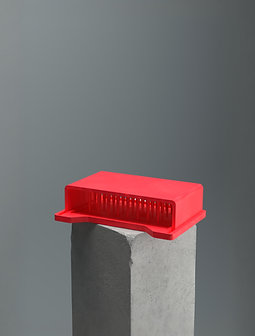13 minutes ago4 min read
4 days ago4 min read


Unlock the full potential of your light microscope. Moving beyond just "getting an image" into the realm of true scientific imaging requires mastering your illumination. The single most important technique for this is Koehler illumination.
First developed by August Köhler in 1893, this method has become the gold standard for brightfield and other forms of optical microscopy. Why? Because it provides perfectly bright, even illumination across your entire field of view, while simultaneously maximizing image contrast and resolution.
Setting up Koehler illumination correctly eliminates distracting glare, artifacts, and "hot spots" from the lamp filament, ensuring that the only thing you see is your specimen, in crystal-clear detail. This guide provides a simple, 6-step protocol to set it up perfectly, every time.
Before diving into the steps, it's helpful to know why Koehler illumination works. The entire setup is a clever optical trick that establishes two independent sets of focal planes: one for illumination and one for image-forming.
The Image-Forming Path: This path ensures your specimen is in focus. It consists of the field diaphragm (near the illuminator), the specimen plane (on your slide), and the intermediate image plane (at your eyepiece). When you focus the field diaphragm's edges, you are aligning it with your specimen.
The Illumination Path: This path ensures the light source is in focus. It consists of the lamp filament, the condenser (aperture) diaphragm, and the objective's back focal plane. This path controls the angle and convergence of light, which dictates your image's contrast and resolution.
By separating these paths, you can control the area of illumination (with the field diaphragm) and the angle of illumination (with the aperture diaphragm) independently. This is the secret to its power.
This procedure should be performed using a low-power objective (like the 10x) and then checked and adjusted for every other objective you use.
Place a high-contrast specimen on the microscope stage (a stained tissue-section slide is ideal). Using your 10x objective, bring the specimen into sharp focus using the coarse and fine focus knobs.
Locate the field diaphragm (sometimes called the illuminator diaphragm). It is typically a ring or slider at the base of the microscope, near the light source. Close this diaphragm all the way. You should see its image—a small polygon of light (often an octagon or hexagon)—in your field of view, likely with blurry, colored edges.
The edges of the polygon are blurry because the condenser is not at the correct height. Use the condenser focus knob (which moves the entire condenser assembly up or down) to bring the edges of the field diaphragm polygon into sharp, crisp focus. The color fringes should disappear, and the edges should be black and sharp.
The sharp-edged polygon is probably not in the center of your view. Locate the two condenser centering screws (or knobs) on the condenser mount. Use these screws to move the polygon of light to the exact center of the field of view.
Now that the condenser is focused and centered, slowly open the field diaphragm again. Open it just until its edges disappear from your circular field of view. This step is crucial: it ensures you are only illuminating the part of the specimen you can see, which drastically reduces stray light and glare, boosting contrast.
This is the final, most critical adjustment for image quality. The aperture diaphragm (or condenser diaphragm) is located inside the condenser assembly, usually controlled by a small lever or ring.
Do NOT use this diaphragm to control brightness. Its job is to control the angle of light (the numerical aperture).
To set it correctly, remove one eyepiece from the microscope and look down the empty tube (or, if your microscope has one, insert a Bertrand lens or phase-contrast telescope).
You will see a bright circle of light, which is the back focal plane of your objective. As you move the aperture diaphragm lever, you will see its iris open and close within that circle.
For the best balance of contrast and resolution, close the aperture diaphragm so that it covers 20-30% of the area, leaving it 70-80% open.
Replace the eyepiece.
You have now successfully set up Koehler illumination. If the image is too bright, do not close the aperture diaphragm further. Instead, use the lamp's intensity control (dimmer) or place a neutral density filter in the light path.

